Selecting a sweet and ripe watermelon can feel a bit like going on a blind date, but it doesn’t have to! Follow these simple tips for how to pick a watermelon and the next time you’re in the market for a melon you’ll choose the juiciest, sweetest one every time.
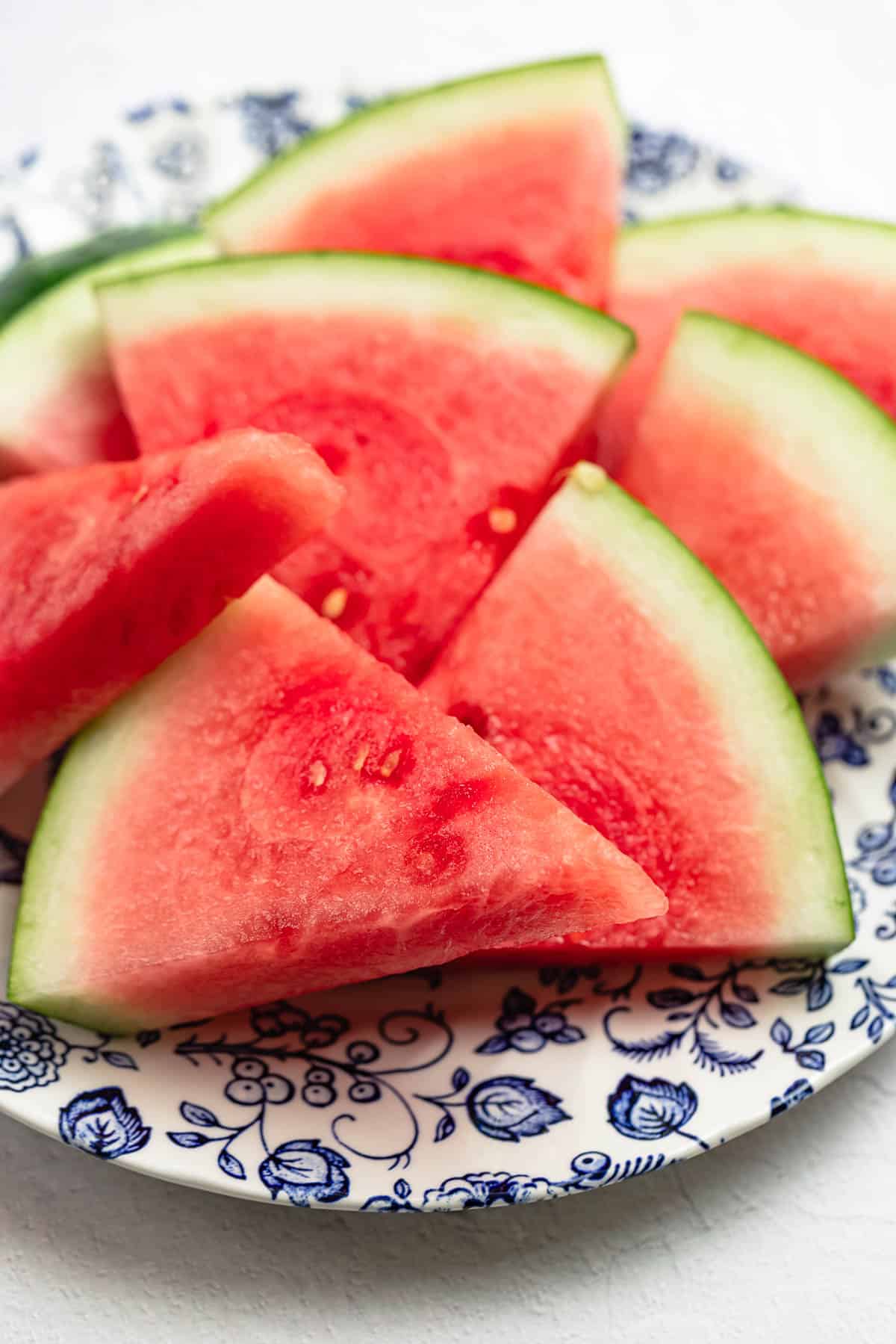
Have you ever been to the market, dreaming of making a juicy watermelon salad and after choosing a melon, realized you had no way of knowing if it was ripe or not? You’re not alone! Learning how to pick a watermelon is a bit like trying to find a good partner on a blind date—you don’t know until you know!
There is nothing as thirst quenching and delicious to me on a hot summer day than a juicy, extra sweet watermelon. I like to cut a melon into wedges and finish it up with some some lime juice and a dash of Aleppo pepper. It’s such a treat!
So, how can you tell when a watermelon is ripe and ready? What should you look for when buying watermelons?
Luckily, I had a lot of experience walking the sunny souq (market) streets in Port Said, Egypt with my late father who taught me many things, from how to storing fresh herbs to making a salad you actually want to eat, to choosing the sweetest watermelon.
I shared my father’s tips for picking the perfect melon in my debut cookbook, and since it’s watermelon season, I decided to share them more in detail here. Once you try these tips, you’ll be a lot more confident when selecting your next melon to bring home.
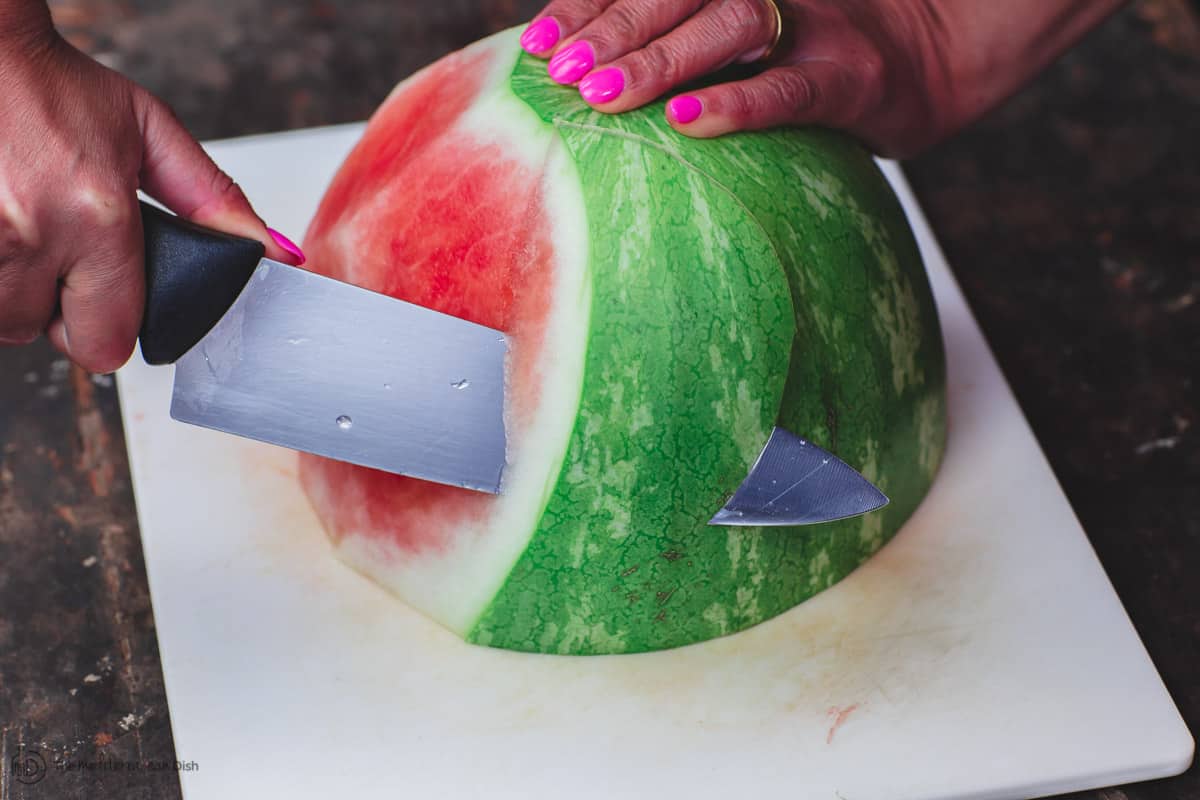
How Can You Tell if a Watermelon is Sweet?
In a nutshell a few things determine the sweetness of a watermelon—including the heat, conditions in which it was grown and pollination. However, quizzing a farmer directly isn’t always an option. In that case, follow this quick reference guide.
A sweet watermelon should:
- Look symmetrical
- Be heavy for its size
- Give a deep sound resonating like a tenor when you knock on it
- Have a large, yellow field spot
See! Picking the perfect melon does not have to be challenging! I go into more detail on how to pick the perfect watermelon in the section below.
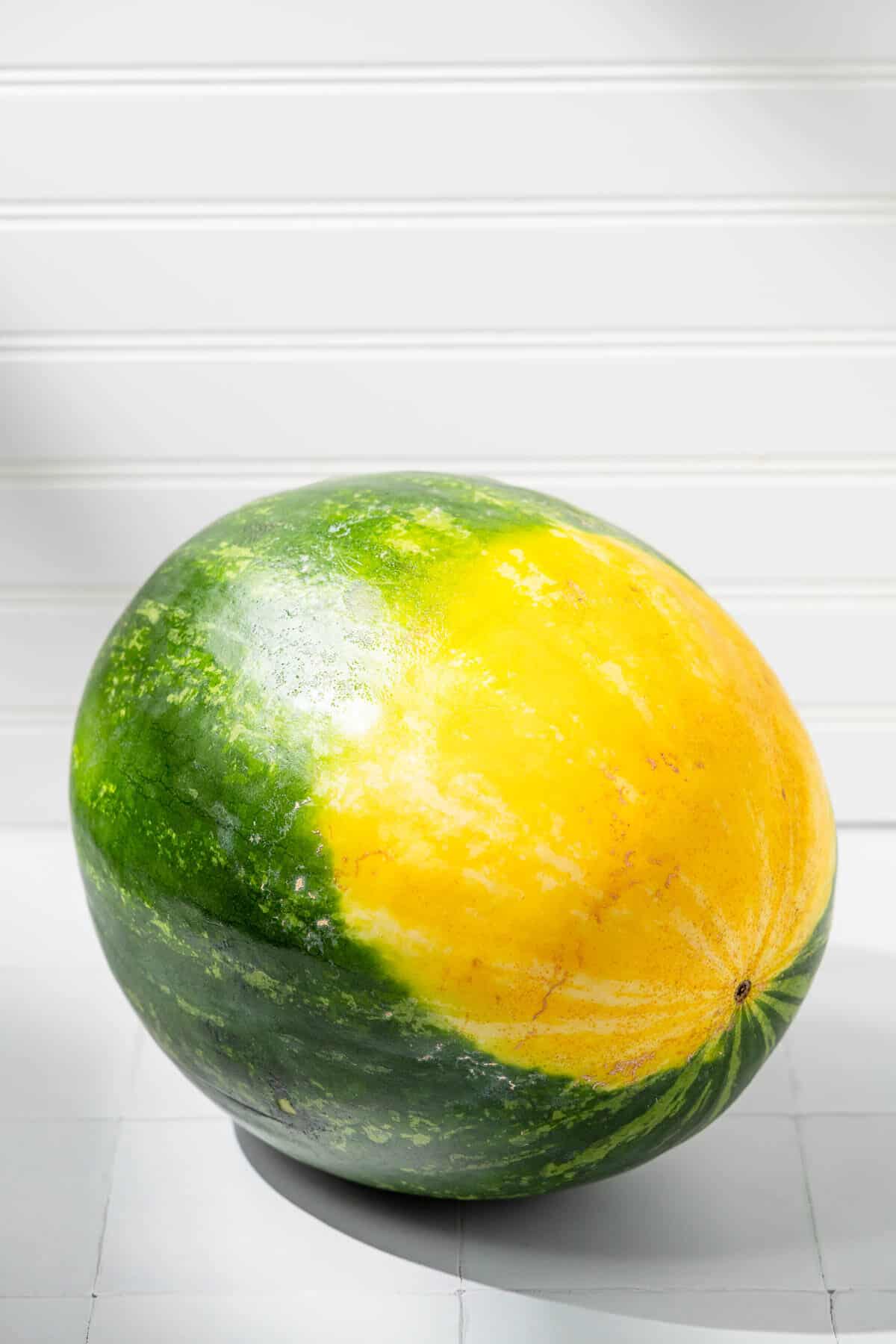
Tips for How to Pick a Good Watermelon
For our readers who like a little extra detail this section is for you!
- Examine the shape. Find a watermelon that is symmetrical in shape; it can be oval or round, but it should not have an odd shape or irregular bumps.
- Balance the weight. A melon that feels heavier than it looks has more water content so it is juicy and ready. Avoid melons that are too large but don’t feel as heavy as they look.
- Take a look at the color of the skin. A ripe melon should have dark and dull skin. If the skin looks pale or shiny, it is not ripe.
- Check the pattern of the webbing or sugar spots (the dark zigzagged stripes). Larger webbing is a sign that the watermelon has been well pollinated and is oozing with sweetness.
- Find the field spot (the spot where the watermelon rested on the ground). Roll it around and look for a dark yellowish spot. If you see a nice large yellow spot (I call it the bald spot), it means the melon had a chance to ripened on the vine, so it is full of flavor. For me, the field spot is the dead giveaway, I always try to find a melon with a good field spot that is creamy or dark yellow. A whiter field spot means that the melon still needs time to ripen.
- Tap on it! Pick up the watermelon, hold it close to your ear and knock it in a few spots. A ripe and juicy watermelon should give a deeper sound resonating like a tenor. A while a hollow sound indicates a dryer, less ripened watermelon.
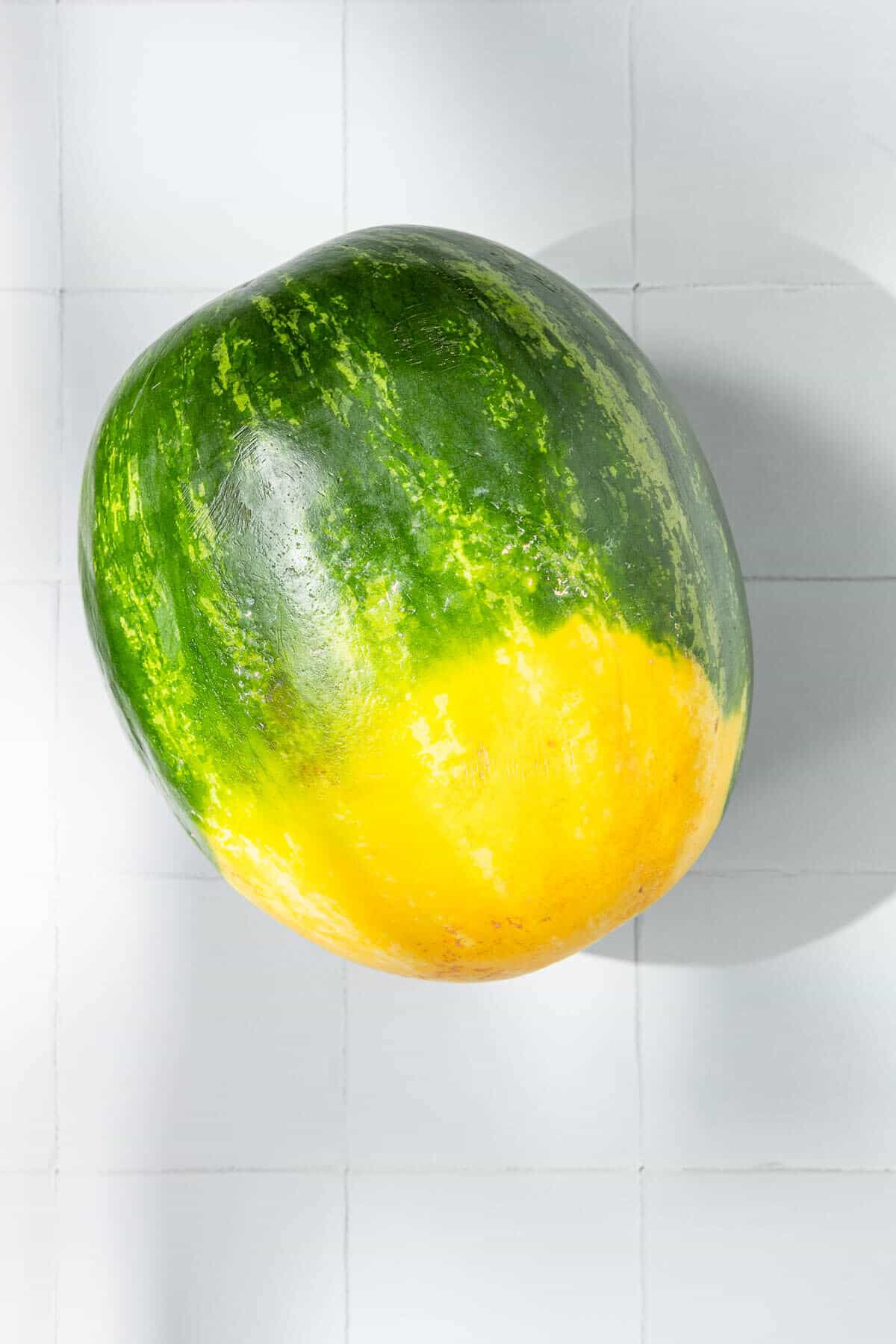
My dad was a master at listening to a watermelon. He never bought a melon without giving it a few taps, while holding it up. As a kid, I always thought that the watermelon whispered a secret in his ear—like, “Take me home!”
In truth, picking a good watermelon by tapping is a bit challenging. And it does take practice for one’s ear to discern the difference between the sounds that come from a watermelon’s belly. So do this, yes, and have fun, but look for other indicators as well.
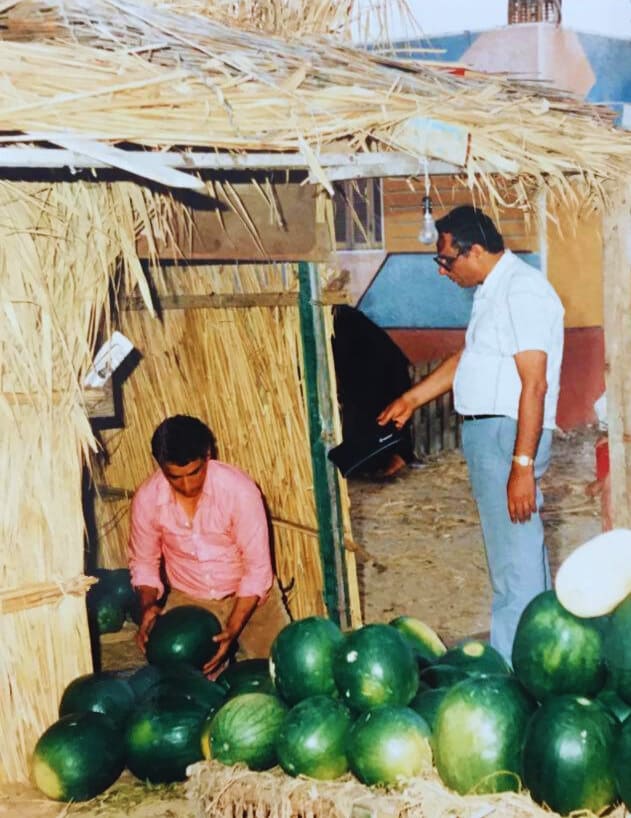


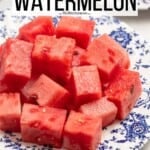
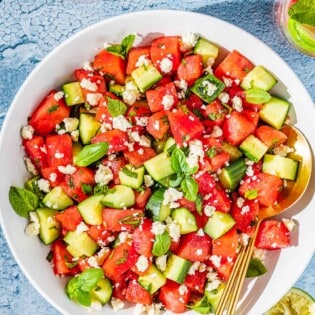
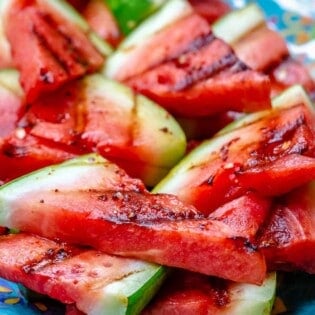

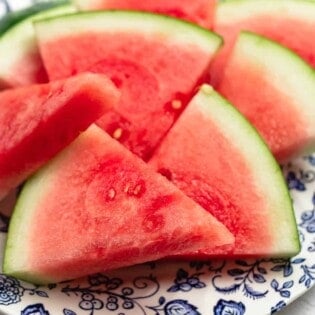
I have found that all the thumping and yellow spots to not be a good way to pick a sweet watermelon. I actually look at the stripes. If the stripes are broken up like the one in the first picture of this article, it will be sweet. Solid lines are not ripe and tend to be tart watermelons. The picture of the one with the big yellow spot, will not be a good watermelon. I am 99% accurate using this method.
Very interesting! Thanks so much for sharing, Solar!
Thank you, but disappointing Watermelon is not only about sweetness, it’s also about crispness…I don’t know about others, but there is nothing enticing about a soggy, overripe watermelon, and that is what I most usually encounter, not lack of sweetness…more lack of proper hydration or freshness.
That’s where pressing the watermelon a little comes in. If it gives, it’s probably mushy inside. You want it to be firm when you press it.
Now I can look forward to buying a watermelon!! It’s always been a crapshoot.
Thanks Suzy.
So glad you found the post helpful, Consuelo!
Thanks for sharing!
These tips are incredibly helpful, especially the bit about the field spot and the color and patterns on the rind. Thank you so much!!
Thanks for all of the delicious recipes and goo tips on cooking and choosing the best fruits and veggies. 💕💕
It’s our pleasure, Ida! Thanks for supporting us!